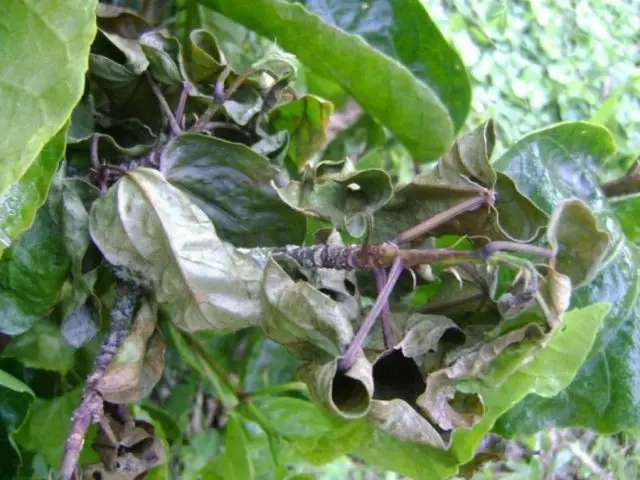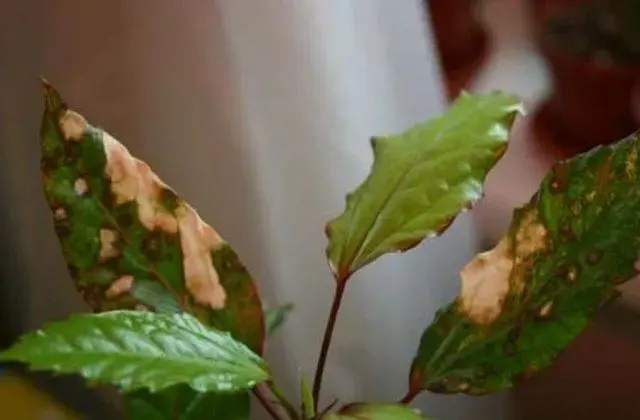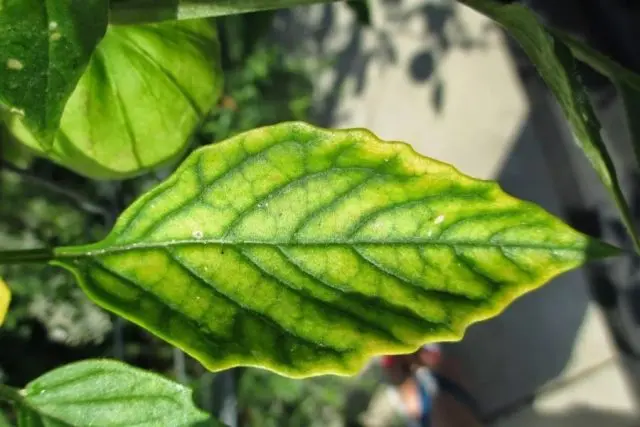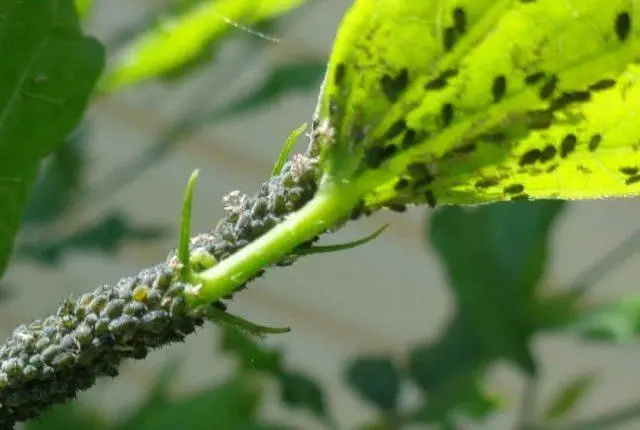Contents
Hibiscus tree is an ornamental garden plant that does not require complex care. Before planting a crop, you should familiarize yourself with the most basic rules for growing.
What does garden hibiscus look like?
Hibiscus (Hibiscus) is a plant of the Malvaceae family, represented by many species and varieties. In tree form, it looks like a deciduous shrub from 1,5 to 6 m above the ground, has a thick branched trunk. The plates of the plant are green, palmately divided, the flowers are bell-shaped, with yellow, crimson, pink or lilac petals.
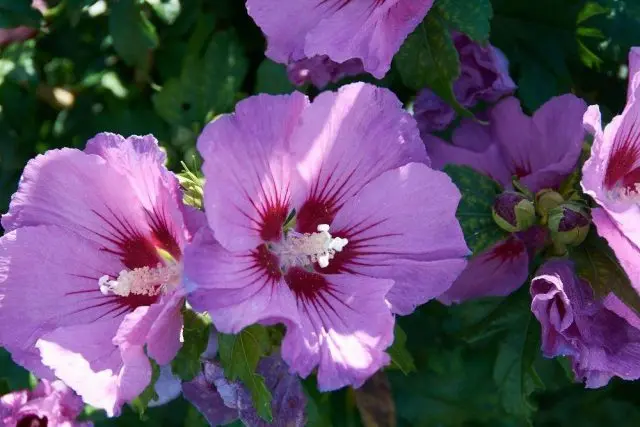
Buds of treelike hibiscus in diameter reach 12 cm
By structure, the buds of an ornamental shrub can be simple or terry. There are varieties with a two-tone color that have a contrasting core.
When the hibiscus blooms
The exact timing of the flowering of a crop depends on the variety. But usually the plant brings buds in the period from late June to early October.
Varieties of tree hibiscus
Photos of tree hibiscus species show that the plant is presented in a wide variety. You can list some of the most popular varieties among gardeners.
Ardens
Deciduous shrub grows up to an average of 1,5 m above the ground. Differs in long and very abundant flowering, brings large buds up to 15 cm in diameter. Petals are double, lavender or whitish-pink.

Tree variety Ardens spreads up to 3 m wide
Blue Satin
A tree-like variety of a garden plant, with good care, reaches 3 m above ground level. Differs in compactness, at the beginning of summer it blooms with large blue or purple flowers. The buds are large, up to 15 cm wide. It is recommended to plant a shrub in the bright sun, since the shade of the flowers in this case will be richer.
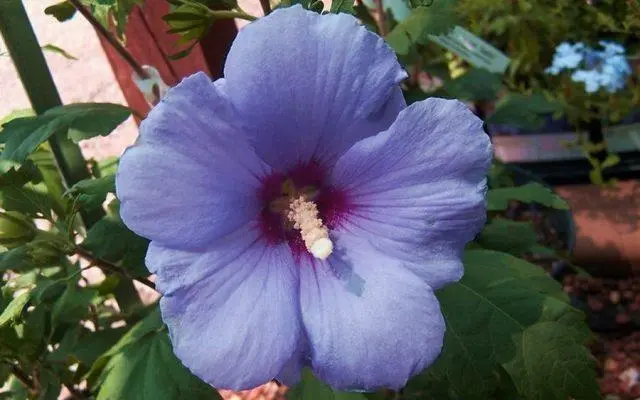
The Blue Satin variety is highly frost-resistant and can withstand temperatures down to -25 ° C in open ground.
Late
A low decorative variety rises to only 1 m above the ground. It has oval-arrow-shaped leaves, the flowers of the plant are medium in size, bright pink in color.
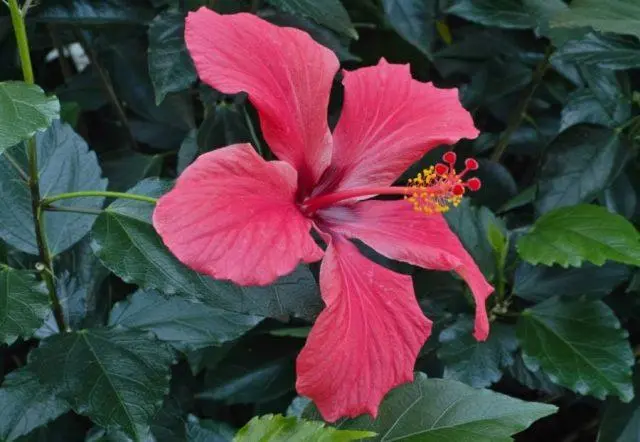
Buds of treelike hibiscus Late in width reach 8 cm
Pale pink
The medium-sized tree-like variety is distinguished by branching, has yellow-green leaves serrated along the edges. The flowers of the plant are shaped like tulip buds. Their core is usually bright pink, and the petals are white.
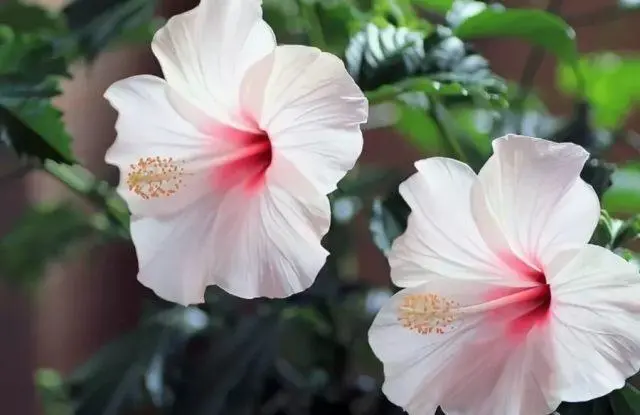
Variety Pale pink reaches 1,7 m above the ground
How to plant hibiscus tree
Planting tree hibiscus in open ground is carried out according to standard algorithms. First of all, you need to choose the optimal site for the plant. The best place for shrubs is light and protected from strong winds with light but fertile soil. The pH level of the soil should be neutral or slightly acidic.
Before planting the plant, the site is dug up properly. If necessary, the soil is fertilized with humus and peat, and complex mineral dressing can also be applied. The next algorithm looks like this:
- For an ornamental shrub, a hole is prepared, twice the size of its root system.
- At the bottom of the recess, a drainage layer of broken brick or pebbles is poured.
- Up to half fill the pit with a substrate from a mixture of garden soil, compost, peat and sand.
- Lower the seedling in the center of the hole and straighten the roots to the sides.
- They fill the voids in the pit with soil and compact the soil at the trunk.
- Spud the seedling and carry out abundant watering.
To make the moisture from the soil evaporate more slowly, the shrub can be immediately mulched with organic material.
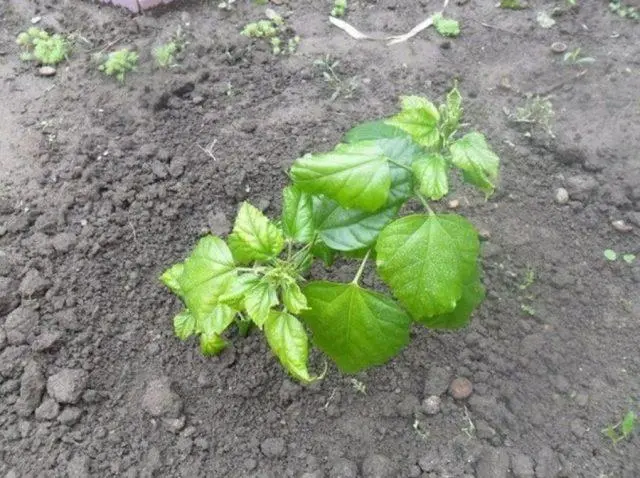
Planting hibiscus in open ground is carried out no earlier than mid-May after the final warming.
How Tree Hibiscus Reproduce
Photos of the hibiscus garden tree show that the plant can be propagated both by seeds and vegetatively. Which method to choose depends on personal preference.
Hibiscus arborescens from seeds
For the first time, an ornamental shrub for a site is easiest to grow from seeds. The breeding scheme looks like this:
- Planting material is wrapped in wet gauze and placed in a plastic bag.
- Leave at room temperature for about a week.
- After the expiration of the period, fill the selected container with a nutrient substrate.
- Moisten the soil and lay out the seeds on its surface.
- Lightly sprinkle with soil on top and spray with a spray bottle.
- Remove the container under the film in a warm place.
After about three weeks, the tree-like garden hibiscus from seeds at home will sprout. After that, you will need to remove the film and rearrange the seedlings on a sunny window for further care.
Reproduction of hibiscus tree seeds, if desired, can be carried out using material collected by hand from adult plants. But keep in mind that hybrid varieties in this case will not retain unique characteristics.
cuttings of garden hibiscus
Propagation of tree-like garden hibiscus by cuttings is usually practiced for valuable rare varieties. The method allows to obtain a seedling that completely preserves the characteristics of the parent plant. The following scheme is used:
- At the beginning of summer, green semi-lignified cuttings up to 17 cm long are cut from a strong adult shrub.
- The leaves located below are cut off, and the upper plates are shortened by half.
- The cuttings are dipped in a root formation solution and planted in nutrient soil with the addition of peat.
- Moisten the substrate and cover the shoots with cut bottles or a plastic bag.
When cuttings, a tree-like shrub takes root on average within a month. After the shoot releases new leaves, the shelter can be removed from it.
How to care for garden hibiscus
Outdoor tree hibiscus does not need complex care. When growing a crop on the site, attention should be paid to several key points.
Watering
Ornamental garden culture reacts equally badly to severe drought and waterlogging. It is necessary to water the shrub in hot weather without precipitation about once a week. Pay attention to the condition of the soil – if it is still wet, you should not add water.
A tree-like shrub requires more intensive watering during the flowering period. In hot weather, in this case, the plant is moistened every two days so that the buds do not crumble from lack of moisture.
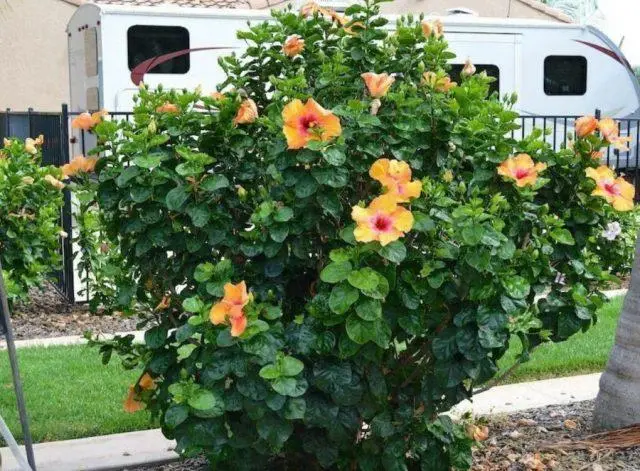
After the next watering, it is recommended to loosen the soil at the roots of the tree-like hibiscus and weed the weeds.
How to feed garden hibiscus
Throughout the warm season, it is necessary from time to time to feed the tree-like hibiscus for abundant flowering with phosphorus-potassium compounds. Fertilizers will ensure good bud set and increase the duration of the decorative period.
Top dressing is applied every two weeks in dry or liquid form. At the end of August, the use of fertilizers is stopped – during this period, the shrub begins to prepare for winter.
When to prune garden hibiscus
Tree hibiscus pruning is carried out for two purposes – to form a crown and to remove dry shoots. For the first time, the branches of the shrub are shortened immediately after planting to the level of 2-3 buds. The main trunk is not touched. In subsequent years, when pruning garden hibiscus in the spring, the side shoots are shortened to two buds, and the bole – up to five buds. If necessary, the root growth is completely removed so that the shrub does not spread uncontrollably around the site.
In addition, garden hibiscus in the Moscow region is cut in spring or mid-autumn for sanitary purposes. During the procedure, all twisted, diseased and broken shoots are eliminated.
When pruning, it is important to remove no more than a third of the green mass from the shrub. A competent haircut stimulates the rapid development of a garden plant. But if you cut the bush too much, it will start to hurt and will not be able to recover.
Transplanting garden hibiscus in the fall to another place
Tree hibiscus does not like transplanting very much and prefers to develop in one place. But if the site does not meet the requirements of the plant, an adult bush can be moved to another corner of the garden.
Transplantation is carried out in early spring after pruning and before flowering. The shrub is dug out of the ground, the dried and rotten sections of the roots are removed, and then the tree-like hibiscus is treated with ash or a light solution of potassium permanganate along the sections. After that, the plant is placed in a new hole, watered abundantly and provided with basic care throughout the season.

When transplanting an overgrown hibiscus, you can simultaneously divide the bush into 2-3 parts
Diseases and pests
Tree hibiscus in general rarely suffers from pests and fungi. However, it can be dangerous for:
- gray rot – the leaves of the plant wither and fall off, the shoots darken and soften;

Gray rot occurs in waterlogged conditions
- rust – yellow-orange spots appear on the plates of the shrub;

Rust affects hibiscus in overly acidic soil
- chlorosis – against the background of the disease, hibiscus leaves brighten and gradually fall off in the lower part of the bush;

The development of chlorosis leads to a lack of iron and nitrogen in the soil.
- aphids – small insects stick to the plates of the plant in early summer and suck the juice out of them.

Aphids can also harm hibiscus buds and impair flowering.
When symptoms of fungi appear, it is necessary to prune the hibiscus tree and remove all affected parts. After that, the shrub is treated with copper preparations, for example, vitriol or Bordeaux liquid. It is also allowed to use ready-made fungicides – Fitosporin and similar ones.
If the garden shrub has suffered from pests, it is recommended to spray it with insecticides Iskra, Karbofos and others. With a small number of parasites, you can use home remedies – soapy water, garlic infusion. Such drugs do not have the highest efficiency, but they do not cause any harm to the plant even during the flowering period.
To prevent diseases, it is necessary to control, first of all, the intensity of irrigation. Fungi usually develop against the background of waterlogging of the soil or its acidification.
Wintering tree hibiscus
Most varieties of tree hibiscus have average frost resistance. In the open field, the shrub is able to withstand temperatures down to -25 ° C in the presence of good shelter.
With the onset of autumn, it is required to install a solid frame made of a metal profile or wooden planks above the plant. From above, agrofiber or spunbond is pulled onto the structure. It is not recommended to use the film – it almost does not let air through, the bush begins to rot. Before the onset of cold weather, the roots of treelike hibiscus are densely mulched with dry leaves or humus for warming.
After snow falls, a dense snowdrift can also be formed around the bush. It will protect the crop from cold winds and severe frosts. With the onset of spring, the shelter is removed at the first thaw so that the plant does not suffer from excessive moisture.
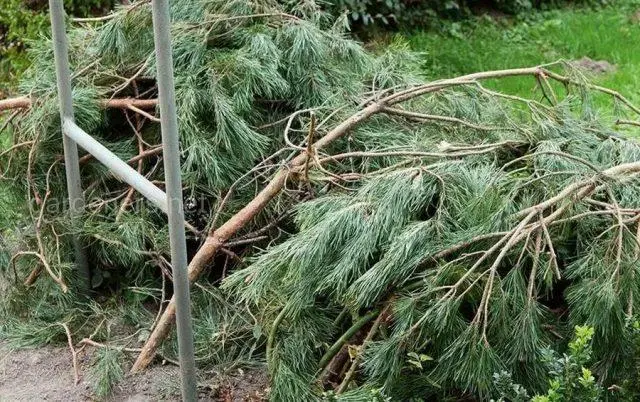
If the winter is expected to be cold, the frame shelter above the hibiscus can be additionally covered with spruce branches.
Conclusion
Hibiscus arborescens is a medium-sized ornamental shrub with long and abundant flowering. Planting a plant on the site is very easy, the culture does not require complex care. The main attention should be paid to watering and timely pruning.










